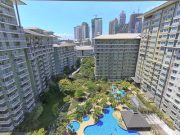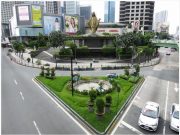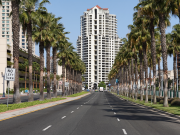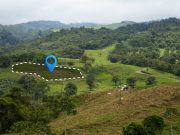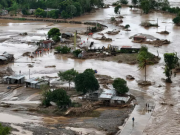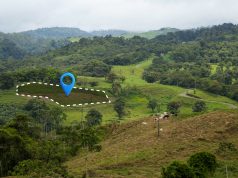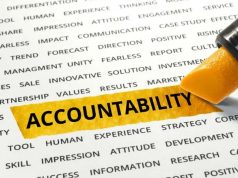Executive Summary
By Sheila Viesca, Ph.D.
With insights from John Riad, CEO of HousingInteractive
Infrastructure projects under the government’s “Build Better More” (BBM) program are fundamentally reshaping the Philippine real estate landscape. These high-impact projects, ranging from new expressways and railways to digital backbones, serve as a direct catalyst for significant property value appreciation in previously underserved regions. By transforming once-remote areas into accessible and desirable locations, BBM creates new economic hotspots, attracting a surge of development and investment. This is not a hypothetical scenario; it is the deliberate and tangible result of a comprehensive plan designed to address national infrastructure deficiencies and foster a more connected, competitive, and resilient Philippines.
The Road to “Build Better More”: Driving Growth with Responsibility
The “Build Better More” program is reshaping the Philippine real estate landscape, unlocking massive growth and pushing property values upward. This surge in development brings real opportunities for wealth creation and infrastructure improvement. However, it also creates serious risks, including gentrification, displacement of long-time residents, and speculative land buying that drives inequality and destabilizes communities.
To stay ahead, real estate stakeholders need more than just market access; they need strategic direction and clear communication. HousingInteractive delivers exactly that. As a leading digital brokerage, it connects developers, investors, and buyers with speed and accuracy, providing data-driven insights that enable clients to make informed, profitable decisions. At the same time, TalkShop strengthens the human side of the business. Their communication training equips agents, developers, and policymakers to build trust, close deals, and lead with confidence in a competitive market.
Together, HousingInteractive and TalkShop provide a clear path forward: grow the market, protect communities, and ensure that progress benefits more Filipinos. With the right tools and mindset, we can build better—and do it right.
What is BBM? A Bold Push Toward a Modern Philippines
“Build Better More” (BBM) is the Marcos Jr. administration’s aggressive push to modernize the Philippines. Running from 2023 to 2028, this program isn’t just a continuation of previous efforts—it’s a major leap forward. BBM aims to overhaul national infrastructure to fuel long-term economic growth, improve daily life for Filipinos, and raise the country’s global competitiveness.
With 198 flagship projects worth a combined ₱8.8 trillion, BBM signals a clear commitment to transformation. It blends 124 new initiatives with critical carryovers from the “Build, Build, Build” program to ensure continuity and fast-tracked progress. The scale and scope of BBM show that this is more than just development—it’s a strategic investment in the Philippines’ future.
Key Project Types Under BBM
The “Build Better More” (BBM) program is more than just a series of infrastructure upgrades; it’s a strategic roadmap for national transformation. By investing in critical connectivity, climate resilience, and social development, the BBM initiative aims to create a more competitive, inclusive, and future-ready Philippines.
BBM projects fall under several core sectors. Each type is designed to target specific national needs, from reducing travel time to protecting communities from natural disasters.
1. Physical Connectivity
Objective: Enhance mobility, boost trade, and reduce congestion by connecting islands, provinces, and economic zones.
Key Features:
- Massive road, railway, bridge, and airport upgrades.
- Designed to shorten travel times and unlock regional economic potential.
| Project | Location | Impact |
| Panay Railway Project | Western Visayas | Promotes regional commerce and tourism. |
| Mindanao Railway Project | Mindanao | Boosts intercity trade and movement in Mindanao. |
| Samal Island-Davao City Connector Bridge | Davao Region | Improves inter-island access and supports tourism. |
| Cebu-Mactan 4th Bridge | Central Visayas | Helps decongest traffic and support urban mobility. |
| Bataan-Cavite Interlink Bridge | Luzon (Central-South) | Reduces a 5-hour trip to 45 minutes; improves logistics and commuting. |
2. Digital Connectivity
Objective: Empower citizens with fast and reliable internet access, especially in underserved regions.
Key Initiative:
- National Broadband Program: Expands digital infrastructure to support:
- E-commerce and online business growth
- Digital learning in remote schools
- Remote work and telehealth services
- E-commerce and online business growth
Why It Matters:
- Bridges the digital divide.
- Sparks innovation and entrepreneurship in rural areas.
- Drives inclusive economic participation.
3. Water Resources & Flood Management
Objective: Build climate-resilient infrastructure to protect lives, livelihoods, and ecosystems.
Key Project:
- Pampanga Bay Integrated Disaster Risk Reduction and Climate Change Adaptation Measures
Project Goals:
- Improve flood control and drainage.
- Strengthen water resource management.
- Safeguard vulnerable communities from climate risks.
4. Agriculture & Health Infrastructure
Objective: Invest in human capital and local productivity through access to basic services.
Project Highlights:
- Farm-to-Market Roads:
- Reduces transportation costs for farmers.
- Encourages rural enterprise and market access.
- Health Facilities in Underserved Areas:
- Improves access to medical care.
- Strengthens the healthcare system at the grassroots level.
Inclusive Impact:
- Supports rural communities.
- Promotes food security and public health.
- Ensures development reaches the most disadvantaged sectors.
What Sets BBM Apart? Building Smarter, Growing Stronger
1. A Unified, Multi-Sector Strategy
BBM goes beyond roads and bridges. It’s a comprehensive approach that combines physical infrastructure with digital systems, social services, and climate-resilient designs. By aligning all these sectors under one national agenda, the program ensures that infrastructure development supports long-term sustainability, disaster preparedness, and inclusive access to opportunities. This kind of strategic integration makes BBM more than just a construction spree—it’s a foundation for future-proof growth.
2. Nationwide Development, Not Just Metro Manila
One of BBM’s defining strengths is its focus on regional inclusion. Projects are not clustered around urban centers alone—they’re distributed across Luzon, Visayas, and Mindanao. This spreads economic activity beyond Metro Manila, helping smaller cities and rural areas catch up and thrive. Whether it’s building new ports in the Visayas or expanding transport hubs in Mindanao, BBM is intentionally narrowing the development gap between regions.
3. Built for the Long Run
BBM is not about quick wins; it’s about smart, future-focused investments. Each project is selected for its potential to deliver long-term economic and social benefits. From bridges that connect islands to digital infrastructure that links remote barangays, these efforts aim to boost productivity, create jobs, and raise the overall quality of life. The strategy is clear: build better now to unlock greater value later.
Shaping a Better Future Together
BBM is changing the game for Philippine infrastructure, and with it, the property and investment landscape. For investors, developers, and everyday citizens, understanding this shift is critical to making informed decisions. Partners like HousingInteractive and TalkShop help bridge the gap, offering market insights and communication strategies that let stakeholders lead with confidence. In this fast-moving environment, the smart move isn’t just to keep up—it’s to get ahead, together.
The Mechanism of Property Value Appreciation
Infrastructure doesn’t just move people—it moves markets. New roads, bridges, railways, and airports rapidly increase land value by improving accessibility, driving development, and unlocking economic potential across regions. Here’s how the value appreciation mechanism works, broken down into key components:
A. The Accessibility Multiplier
Core Idea: When an area becomes more accessible, it becomes more valuable.
| Factor | Impact |
| Improved Accessibility | Increases a property’s market desirability and price potential. |
| New Infrastructure | Attracts investors, developers, and homebuyers. |
| Urban Decentralization | Shifts growth away from congested cities to rising provincial hubs. |
Quick Stats:
- Land near new expressways has seen annual price growth of 6.7% to 15.4%.
- Infrastructure-driven locations are now preferred sites for mid-range to high-end developments.
Why it Matters:
This multiplier encourages growth in untapped locations, helping decongest Metro Manila and distribute development across the country.
B. Catalytic Effect on Development
| Sector | Key Impact | Example |
| Residential | Spurs’ new housing communities in emerging areas | CLLEX and NSCR led to rapid development in Bulacan, Pampanga, and Laguna. Some communities doubled in value since launch. |
| Commercial/Industrial | Attracts businesses through reliable access and logistics | Developers like Aboitiz Land invest near highways, airports, and ports to ensure efficiency and scale. |
| Tourism & Leisure | Opens scenic areas to more travelers and investors | New roads and airports in Batangas and Cebu boost second-home demand and hospitality projects. |
Key Takeaway
Infrastructure is the catalyst for property growth. The better connected a location is, the faster its value rises. Whether you’re an investor, developer, or buyer, following the path of new infrastructure is a smart, strategic move.
BBM in Action and Its Real-World Impact
Infrastructure under the Build Better More (BBM) program is already reshaping property markets across the Philippines. Key projects in Luzon, Visayas, and Mindanao are proving how strategic connectivity drives land appreciation, decentralizes development, and unlocks new economic zones. Here’s how it plays out on the ground:
1. Luzon: Central Luzon as a Rising Property Hotspot
Projects:
- Central Luzon Link Expressway (CLLEX): Connects Tarlac to Cabanatuan City, with future expansion to San Jose City.
- North-South Commuter Railway (NSCR): A 147-kilometer rail line from New Clark City, Tarlac, to Calamba, Laguna.
Strategic Benefits:
- Decongest Metro Manila
- Strengthens linkages between economic zones in Central Luzon
- Cuts travel time across provinces
Impact Highlights:
| Metric | Result |
| Regional GDP (2023) | +6.1% growth, higher than the national average |
| Land Values | Strong appreciation in Bulacan, Pampanga, and Nueva Ecija |
| Investor Movement | Growing interest in master-planned communities outside the capital |
Key Takeaway:
Luzon’s infrastructure boom is shifting investor focus from Metro Manila to emerging cities. With strong economic data and fast-growing property markets, Central Luzon is now a key growth corridor.
2. Visayas & Mindanao: Unlocking Island and Regional Potential
Projects:
- Cebu-Cordova Link Expressway (CCLEX): An 8.5-km toll bridge linking mainland Cebu City to Mactan Island, handling 50,000 vehicles/day.
- Mindanao Railway Project (Phase 1): Connecting Tagum, Davao City, and Digos (ongoing).
- Supporting Infrastructure: Davao City Bypass Road
Observed Impact:
| Location | Development Activity | Value Growth |
| Mactan & Cordova | Surge in beachfront residential projects like Costa Mira and Balai Cordova | Significant increase in land and condo values post-CCLEX |
| Davao City | Boosts in pre-selling activity near the future railway line and bypass road | +5–7% in residential prices (2024) |
Notable Trends:
- Cebu: Improved airport access and tourism-driven development
- Mindanao: Investor anticipation already affecting market behavior before project completion
Key Takeaway:
Infrastructure in Visayas and Mindanao is activating dormant real estate potential. The promise of better logistics, tourism access, and intercity connectivity is pulling developers toward long-overlooked but high-potential locations.
BBM’s Measurable Impact on Real Estate
Top Effects Across Case Studies:
- Improved Accessibility = Higher Land Values
- Decentralized Growth = New Residential and Commercial Hubs
- Investor Confidence = Surge in Pre-Selling and Master-Planned Projects
What This Means for You:
Whether you’re investing, developing, or relocating, tracking BBM projects gives you a clear advantage. The areas gaining infrastructure today will be the hotspots of tomorrow. Use that insight to position early and wisely.
The Socio-Economic Implications of Build Better More: Striking the Balance
The “Build Better More” (BBM) program is transforming the Philippine landscape—not just physically, but economically and socially. While the benefits are substantial, the challenges cannot be ignored. Understanding both sides is key to making informed, responsible decisions as stakeholders, investors, and citizens.
A. Positive Impacts on Communities
| Key Benefit | Impact |
| Economic Growth | BBM generates massive employment. Drawing from past programs like “Build, Build, Build,” infrastructure projects can create over 1 million jobs annually across construction and support industries. |
| Improved Quality of Life | New roads and transit systems improve access to schools, hospitals, and markets, boosting healthcare, education, and daily living for underserved communities. |
| Investment Opportunities | Infrastructure boosts property values in formerly remote areas, allowing longtime landowners to build wealth and encouraging local investment and development. |
Why It Matters:
- Infrastructure is not just about transport—it’s a catalyst for inclusive economic growth.
- Residents benefit from job creation, better services, and asset appreciation.
- Communities become more connected, resilient, and self-sustaining.
B. Challenges and Risks That Need Addressing
| Challenge | Impact |
| Gentrification & Displacement | Rising land prices can force low-income families out, particularly informal settlers who are relocated to areas far from jobs and services. |
| Speculation | Anticipation of infrastructure projects leads to land banking and price inflation, which blocks small local investors and limits productive development. |
| Infrastructure Delays | Red tape, weak governance, and logistical issues slow down projects, delaying job creation and public benefits. The Philippine Development Plan flags this as a recurring issue. |
Why It Matters:
- Social equity can be undermined if rising values push out original residents.
- Speculation distorts markets, making growth less inclusive and sustainable.
- Delayed execution reduces impact, wastes resources, and erodes public trust.
Key Takeaway: Build Responsibly, Grow Sustainably
BBM has the power to lift communities and unlock economic potential—but only if it’s executed with accountability, social safeguards, and strategic planning. Policymakers must ensure that growth is inclusive, not just profitable. Meanwhile, investors and developers must pursue projects that balance profit with community impact. To truly “build better more,” the country must not just build fast but build fair.
The Role of Real Estate Practitioners in the BBM Era
As the Build Better More (BBM) program reshapes the Philippine property landscape, real estate professionals are taking on a more strategic and influential role. They’re no longer just brokers—they are market advisors, data-driven consultants, and critical connectors in a rapidly evolving environment.
A. Market Intermediaries and Strategic Advisors
Real estate firms like HousingInteractive play a vital role in matching the right properties with the right buyers, investors, and developers. With their deep market knowledge and digital platforms, they help simplify complex decisions and guide clients toward high-return opportunities.
Key Functions:
| Function | Description |
| Deal Facilitation | Connect developers, investors, and buyers to fast-track property transactions. |
| Investment Advice | Identify growth areas and offer data-driven recommendations on when and where to invest. |
| Market Modernization | Leverage years of experience in online brokerage to make property buying faster and more transparent. |
Why it matters:
With new infrastructure reshaping real estate markets, expert guidance helps clients act early and strategically—especially in newly accessible areas.
Infrastructure creates opportunity, but timing is everything. Our job is to help clients move early, act smart, and invest where the future is being built.
— John Riad, Founder of HousingInteractive
B. Adapting to a Changing, Data-Driven Market
To stay ahead, real estate professionals are evolving with the market. They’re integrating tech, refining strategies, and targeting the most promising growth corridors.
Top Adaptation Strategies:
- Technology-Driven Selling
- Online listings and virtual tours for local and international buyers
- Real-time access to market insights, especially useful for OFWs and foreign investors
- Online listings and virtual tours for local and international buyers
- Focus on Infrastructure-Driven Locations
- Marketing properties in Bulacan, Pampanga, and Laguna, near BBM projects
- Highlighting benefits like reduced travel time and proximity to economic hubs
- Marketing properties in Bulacan, Pampanga, and Laguna, near BBM projects
- Narrative Selling
- Using the “accessibility = value” message to position emerging locations as smart investments
Key Takeaway:
The most successful practitioners are those who understand the market shift and adapt quickly. By combining local knowledge, digital tools, and real-time data, they help clients capitalize on the new wave of infrastructure-led growth.
Bottom Line:
Real estate professionals aren’t just riding the BBM wave; they’re helping direct it. Their role is critical in guiding smart investments, driving decentralization, and ensuring that infrastructure translates into real opportunity.
The market is changing fast—and so are we. By embracing technology and focusing on high-growth areas, we help our clients stay ahead of the curve.
— John Riad, Founder of HousingInteractive
Navigating the New Philippine Landscape
The Build Better More (BBM) program is driving a major shift in the Philippine real estate market by boosting infrastructure in underserved regions. This is creating new growth hubs, raising property values, and attracting developments across residential, commercial, and tourism sectors. Connectivity is now a key factor in property investment decisions.
However, challenges like gentrification, speculation, and project delays must be addressed. HousingInteractive helps clients navigate these changes with expert market insights, while TalkShop equips professionals with the communication skills needed to lead and negotiate effectively.
Understanding BBM is essential for making smart investment decisions. Work with HousingInteractive for strategic guidance and TalkShop to strengthen your professional edge in this evolving market.



